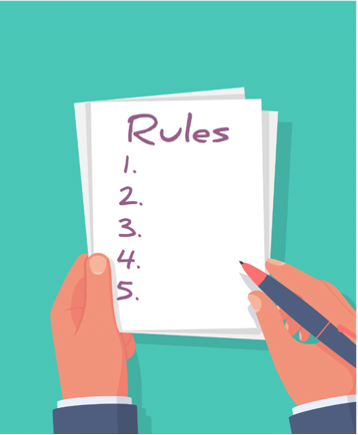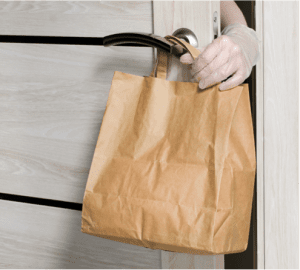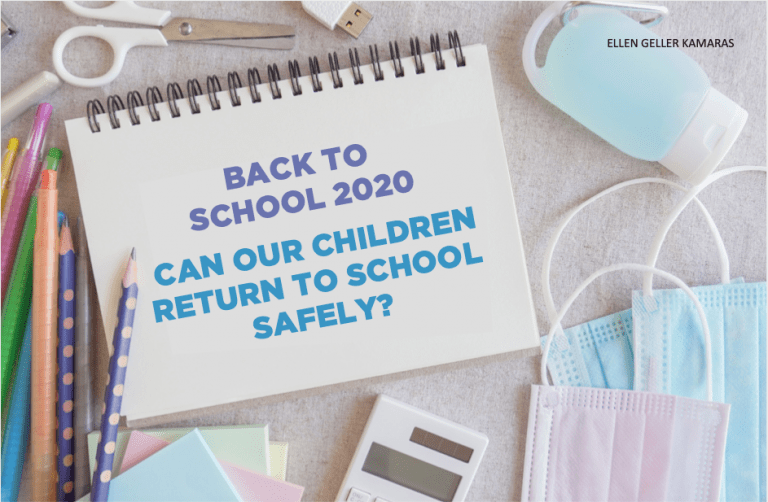DAVE GORDON
Election Day is right around the corner and things are indeed different this time around.
For example, there are no stump speeches, no canvassing, and no live fundraisers during these Coronavirus times. It certainly makes candidates less accessible and puts a damper on our ability to get to know them as people, and to get a handle on just what they represent. And secondly, it is tough to assess which policies will be able to put into action if the COVID-19 lockdown continues.
What is also interesting is that former Vice-President Joe Biden, if elected, will be the oldest president sworn in, at 78 years old. President Donald Trump would swear in for a second term at age 74.
As might be expected, there are major differences between the two candidates on a variety of issues – with Republican Donald Trump running on his list of achievements, and Democrat Joe Biden running on the ideas he hopes to implement, if elected.
Let’s take a look at a few main issues voters are interested in.
ISRAEL
What you are probably very concerned about is where each candidate stands on Israel. Israel is not merely in our hearts and minds, nor just a place where we might have relatives. Israel for us is an ideological lodestone. In that regard, what a president says and does regarding Israel is a reflection of his moral compass – how he sees right and wrong. Let us look at President Obama’s voting against Israel at the UN and his backing of abstentions during anti-Israel resolutions. Contrast these moves with Trump’s backing of Israel with his pick of UN Ambassador Nikki Haley, who courageously stood up to the Security Council time and again, in defense of Israel.

Biden’s rhetoric and policy on Israel is not so different from what was seen under Obama. Biden positions himself as a fair and neutral party, who advocates a two state solution. Where he differs from Trump is that he plans to reinstate Palestinian aid. What they have in common is that both have denounced the use of the label of “occupation” to describe Israel’s presence in the West Bank.
Trump’s record on Israel and assisting the Jewish people is for many no less than legendary.

Trump’s positions on Israel are widely known, and he is probably the president who has made more overtures to the Jewish people than any other president before him. Trump has worked closely with Israeli Prime Minister Netanyahu and plans to continue doing so. Over the last three years Trump has shown unwavering support for the Israeli people and the Israeli government. He recognized Jerusalem as Israel’s rightful capital, and the Golan Heights as Israeli territory. Trump’s administration has made it clear that the lands east of the Green Line are not illegal – contrary to the Democrats’ position.
Trump has also made it clear that on his watch there will be no push for a two-state solution or an independent Palestinian state.
Though the New York Post in mid-September touted President Obama’s détente with Muslim nations as a crowning achievement worthy of his Nobel Peace Prize, Trump (at the time of this writing) has been nominated for a Nobel Peace Prize for tangibly brokering agreements that never would have been imaginable six months ago. He has been a party to trade agreements between Israel and Middle Eastern countries that previously had no diplomatic relations with Israel.
For example, Trump helped arrange the Abraham Accords – the peace deal between Israel and the United Arab Emirates. Bahrain is next in line, reports say, and for the first time in history, Saudi Arabia has allowed Israeli planes to fly over their airspace. Other rumored peace deals (or accords) in the works are with Oman, Lebanon, Morocco, and Kuwait.
The Trump Administration withdrew from UNESCO to show that the United States would not stand for the organization’s anti-Israel bias, and withdrew from the UN Human Rights Council, citing “a chronic bias against Israel” and the human rights abuses of various sitting members (China and Venezuela, among them).
Of course, long ago Trump pulled out of the disastrous Iran deal signed under Obama, and it only took about a year into the president’s term before Israeli spies captured hundreds of tons of documents showing that the Iranians were still hard at work developing their nuclear weapons program. It might be difficult for Biden to justify how his superior made a wise move with that deal.
CLIMATE CHANGE
Another large election issue concerns climate change and energy policies. From Biden’s point of view, the planet is in imminent danger, and as such, he has made a promise to make climate change the heart of his energy policy as president. He has vowed to invest more than $2 trillion in green energy. Critics might be wary of the hefty price tag, as well as having questions as to how that sum is to be spent. By way of example, Obama poured $50 billion into three dozen burgeoning “green energy” companies – most of which were never built, none of which produced a single kilowatt of energy.
Trump is not really known for his climate change policies, and has said on numerous occasions that he does not think there was man-made climate change. He has, however, signed legislation that demonstrates his good stewardship of the environment.
Trump famously opted out of the Paris Accord, a plan in his view that would mean onerous economic and infrastructure changes on the United States, while giving a pass to some of the world’s biggest polluters. Instead, President Trump negotiated the historic United States–Mexico–Canada Agreement (USMCA), which contains the strongest environmental protections of any trade agreement in history.
The President signed the Save Our Seas Act to protect our environment from foreign nations that litter our oceans with garbage. And he signed the Great American Outdoors Act, securing the single largest investment in the nation’s National Parks and public lands in history. Trump designated 1.3 million new acres of wilderness and joined the One Trillion Trees initiative to plant more trees. And finally, he spent $38 billion for drinking water infrastructure improvement for Americans.
TAXES
Biden has talked about different tax policies he would like to see enacted, like repealing Tax Cuts and Jobs Act (TCJA), taxing capital gains at income tax rates, raising corporate income tax, and enacting increased payroll tax on income over $400,000. Trump supports the TCJA and has said he plans to lower income taxes even further, as well as extending more generous estate tax exemptions.
IMMIGRATION
Biden would reinstate DACA status for Dreamers. While he has a history of a talking tough on immigration, he has called Trump’s immigration approach “morally bankrupt” and would like to focus on the root causes of illegal immigration from other countries, including providing more foreign aid to countries with a large number of citizens wishing to immigrate to the United States. Biden continues to support the 2013 reform plan under Obama that never came to fruition. This plan includes a path to citizenship.
For his part, Trump has worked hard to limit illegal immigration into the United States, including immigration bans from certain countries. He has used Executive Orders to change asylum and deportation, as well as instituting a visa policy that is much more restrictive. The promise to build a border wall is still very much an issue for Trump, as he continues to boast that it is already underway. He supports merit-based immigration rather than family connection (chain migration) immigrations.
FOREIGN POLICY
Biden has served in the Senate Foreign Policy Committee for many years, which is seen as evidence of his knowledge of foreign policy. He sees himself as inheriting a very chaotic situation in regard to global stability. Biden’s goals are to return to normal relations with America’s allies, and to advance global aims in health and climate change. He says one of his priorities is to restore America’s image as a member of a global community.
Meanwhile, since taking office Trump’s focus in foreign policy has been an America First approach, aimed at showing America’s strength and supremacy. The aforementioned USMCA will encourage increased manufacturing in the U.S. and will allow workers and small businesses to flourish.
Trump has successfully influenced several nations to uphold their commitment to pay their share of NATO funding Prior to Trump’s intervention, these countries had not been making their promised payments.
Under Trump, several U.S. major military victories can be counted, including strikes against Syrian bases and eliminating some of the worst terrorists in the Middle East.
Islamic State’s Abu Bakr al-Baghdadi was killed by U.S. forces, and so too his immediate successor, in a separate raid. (Baghdadi once controlled thousands of square miles of territory across the Middle East.) Later, a U.S. drone strike killed Qasem Soleimani, Commander of the Iranian Islamic Revolutionary Guard Corps’ elite Quds Force, in Baghdad.
ECONOMY
Biden has focused most of his economic policy around recovery from the economic downturn caused by COVID-19. That means he plans to focus on health and safety as a way to return the economy to pre-Covid numbers. Universal Healthcare is a key prong of his plan as well, seeing medical expenses and debt as serious roadblocks to economic freedom for Americans. Biden’s focus on climate change, immigration, education, and new infrastructure are also key components to his economic policy.
Trump’s America First philosophy carries over to economics, informing his trade negotiations and deals. He has cut and plans to continue to cut regulations and red tape for businesses, and has long supported bringing more manufacturing jobs home. Trump wants to cut government spending by way of eliminating waste and by reducing the number of federal employees, with the ultimate goal of creating more jobs.
CHINA
Biden has been criticized for an inconsistent and unarticulated strategy in regard to China and Chinese power gains. He does tend to agree that China has taken advantage of the U.S. in trade deals but believes that Trump’s tariffs are self-defeating. Biden proposes, instead, that the US utilize current trade deals. At the same time, he thinks Trump backed down too quickly to China in the wake of COVID-19 and critiqued his weak support of Hong Kong.
Trump rose to power on the rhetoric that he would be hard on China, and he has mostly done so. He has entered into trade wars with the Communist nation, ending special economic status, and has imposed sanctions for rights violations in Hong Kong.
The Trump administration blocked the state-backed Chinese phone company Huawei from operating in the U.S., and cracked down on China’s counterfeiting and technology theft. In response to China’s rampant trade cheating, the Trump Administration placed 25 percent tariffs on roughly $250 billion worth of products that are supported by China’s unfair industrial policies.
CRIMINAL JUSTICE
Biden, previously known as a law and order politician, has shifted his stance in the wake of the death of George Floyd at the hands of police in Minneapolis, and the nationwide protests that followed. Though Biden has not embraced the more progressive calls to defund police, he has agreed that funding should be based on departments meeting standards of decency. Biden has said that he believes there are systemic disparities in treatment of the accused and convicted based on race, income, and status.
The First Step Act passed with Trump’s support. It has contributed to thousands of inmates being released from prison for minor crimes, who are not a clear and present danger to society. This is the most comprehensive step to undo the damage of the Crime Bill under President Clinton, and the Mass Incarceration that started under President Nixon. Trump said he intends to take more action on these issues in his second term.
SCHOOL CHOICE

This issue is one of many dividing lines between the two candidates. In August, Trump said, “I’d love to see school choice” and “I’d love to see that be a big factor” in his second term. He also said, “In a second term, I will expand charter schools and provide school choice to every family in America.” He said school choice is “the civil rights issue of all time.”
He has to be careful though. While the annual federal funding for charter school expansion has risen by $100 million over the course of Trump’s term to $440 million, the annual budget for the U.S. Department of Education’s (that is, public schooling) has grown by $5 billion to total $73 billion, despite his pledge four years ago to shrink it.
Interestingly, the 2017 GOP tax overhaul signed by Trump changed rules for 529 savings plans, to permit them to be used for K-12 private school expenses, not just for postsecondary costs.
However, Biden is against sending public money to parochial K-12 schools through voucher programs, something that is supported by Trump.
Along party lines, Democrats in Congress have sought to cut the $440 million in aid for charter growth, and since about ten percent of school spending comes from DC, it is possible that the House, with a continued majority, could whittle down voucher funding.
CONCLUSION
In conclusion, these are just nine of the many issues that are being discussed in this election cycle. Most, if not all, of these issues are relevant to our community as a whole. Certainly, they are topics on the minds of all voters who will cast their ballots this November. Ultimately, we want to be assured that our community’s values are represented in the White House. It is up to all of us to make an informed choice.





















